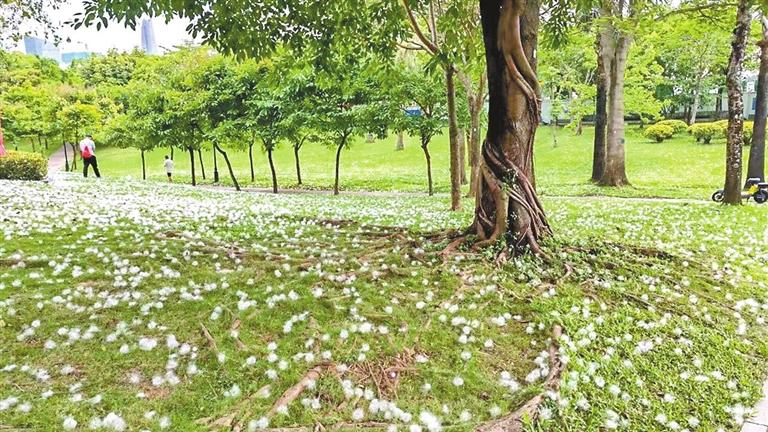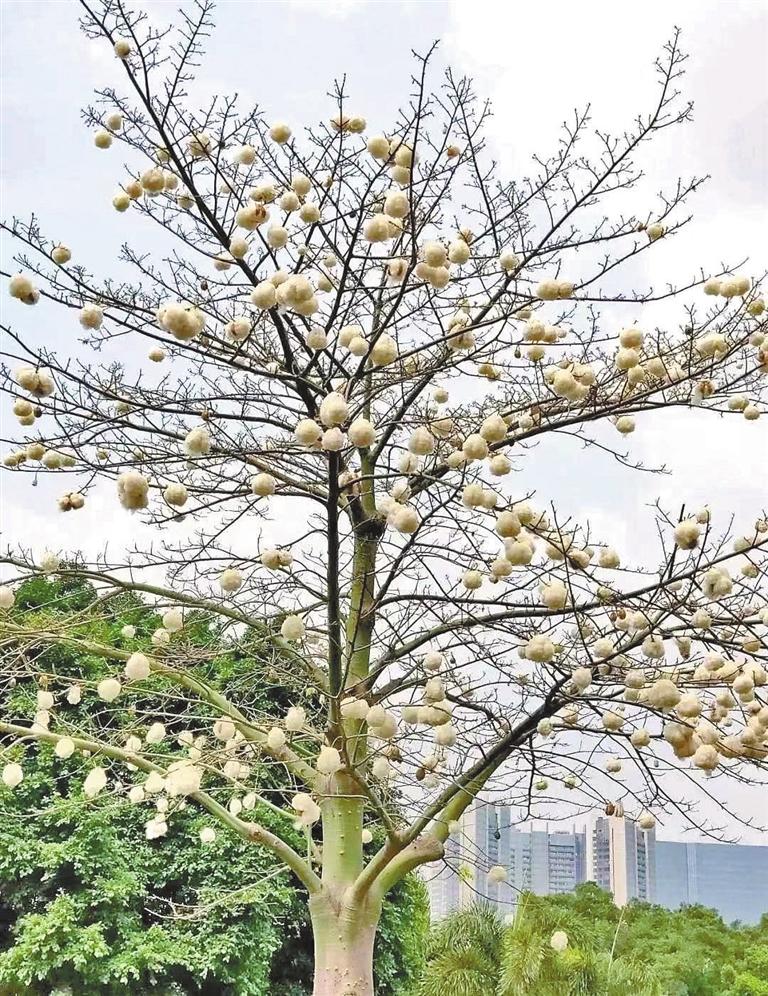

THE annual cottonwood season will soon produce a torrent of fluffy seeds, a phenomenon known as “flying snow.” Pedestrians will find themselves in the midst of an airborne assault, with the pesky particles making their way into unsuspecting nostrils. For individuals with sensitive respiratory systems, these conditions are nothing but trouble. These seeds are predominantly from plants in the willow family, such as poplar and willow trees, and are primarily composed of cellulose, which is similar to cotton. The phenomenon, which normally occurs between April and May and is particularly prevalent in Chinese cities, creates a common woe in urban areas. In Guangdong, particular attention is warranted for the Ceiba speciosa tree (the silk floss tree), which blossoms from October to December and matures from April to May. This tree sheds its outer layer when its fruit ripens, thereby releasing cotton-like fluff reminiscent of cotton balls. As the tree’s fruit is currently reaching maturity, individuals with sensitivities could face severe adverse reactions. Inhalation of these particles can trigger symptoms such as a runny nose, coughing fits, and asthma. Moreover, contact with the fluff may induce allergic responses like itching and red eyes. For individuals prone to allergic rhinitis, dermatitis, conjunctivitis, and asthma, precautionary measures are crucial when venturing outdoors. Wearing masks, glasses, and long sleeves can help minimize exposure. Ensuring thorough removal of any particles from clothing before returning home is advised. In case of accidental inhalation, efforts should be made to cough out the particles to prevent further irritation. If the skin displays signs of an allergic reaction post-contact, refraining from scratching is crucial since open wounds can serve as entry points for particles or pathogens. Should allergy medications fail to alleviate symptoms, prompt medical attention is imperative. Apart from airborne fluff, pollen stands as another common allergen in spring. Individuals predisposed to allergies are advised to remain vigilant and implement necessary preventive measures to safeguard their health. (Tang Li) | 
